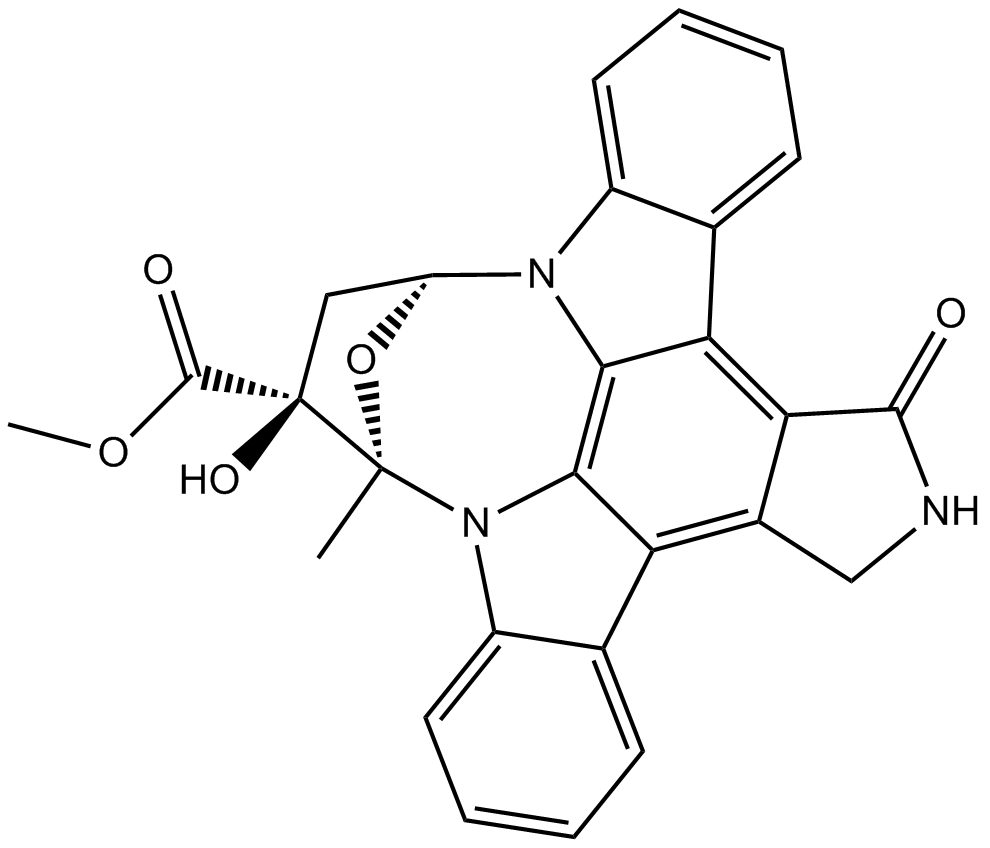K 252a (Synonyms: SF 2370) |
| Catalog No.GC11362 |
A protein kinase inhibitor
Products are for research use only. Not for human use. We do not sell to patients.

Cas No.: 99533-80-9
Sample solution is provided at 25 µL, 10mM.
K252a is a staurosporine analog isolated from Nocardiopsis sp. soil fungi that inhibits protein kinase (PK) C, PKA, Ca2+/calmodulin-dependent kinase type II, and phosphorylase kinase with IC50 values of 470, 140, 270, and 1.7 nM, respectively.[1],[2] Because it inhibits neurotrophin receptor tyrosine kinases, K252a at 100-500 nM has been used to suppress trophoblast proliferation and increase apoptosis associated with the disruption of mitochondrial functions in cultured choriocarcinoma cells.[3] Recently, K252a has been shown to inhibit PRK1 (IC50 = 3.2 nM in vitro), a PKC-related kinase that phosphorylates histone H3 at threonine 11 and is involved in androgen-dependent gene expression.[4]
Reference:
[1]. Yasuzawa, T., Iida, T., Yoshida, M., et al. The structures of the novel protein kinase C inhibitors K-252a, b, c AND d. Journal of Antibiotics 39(8), 1072-1078 (1986).
[2]. Davis, P.D., Hill, C.H., Lawton, G., et al. Inhibitors of protein kinase C. 1.1 2,3-bisarylmaleimides. Journal of Medicinal Chemistry 35, 177-184 (1992).
[3]. Kawamura, N., Kawamura, K., Manabe, M., et al. Inhibition of brain-derived neurotrophic factor/tyrosine kinase B signaling suppresses choriocarcinoma cell growth. Endocrinology 151(7), 3006-3014 (2010).
[4]. Köhler, J., Erlenkamp, G., Eberlin, A., et al. Lestaurtinib inhibits histone phosphorylation and androgen-dependent gene expression in prostate cancer cells. PLoS One 7(4), (2012).
Average Rating: 5 (Based on Reviews and 21 reference(s) in Google Scholar.)
GLPBIO products are for RESEARCH USE ONLY. Please make sure your review or question is research based.
Required fields are marked with *




















